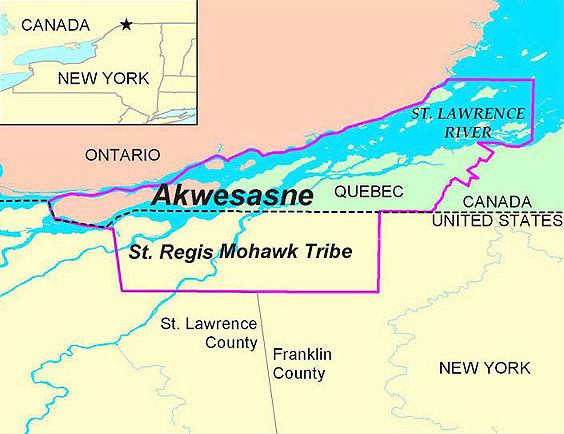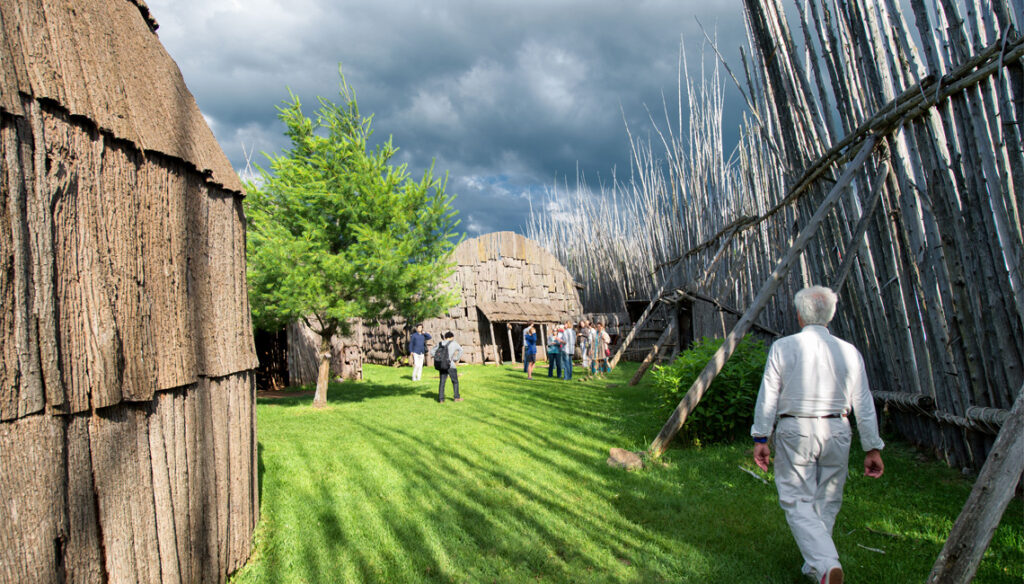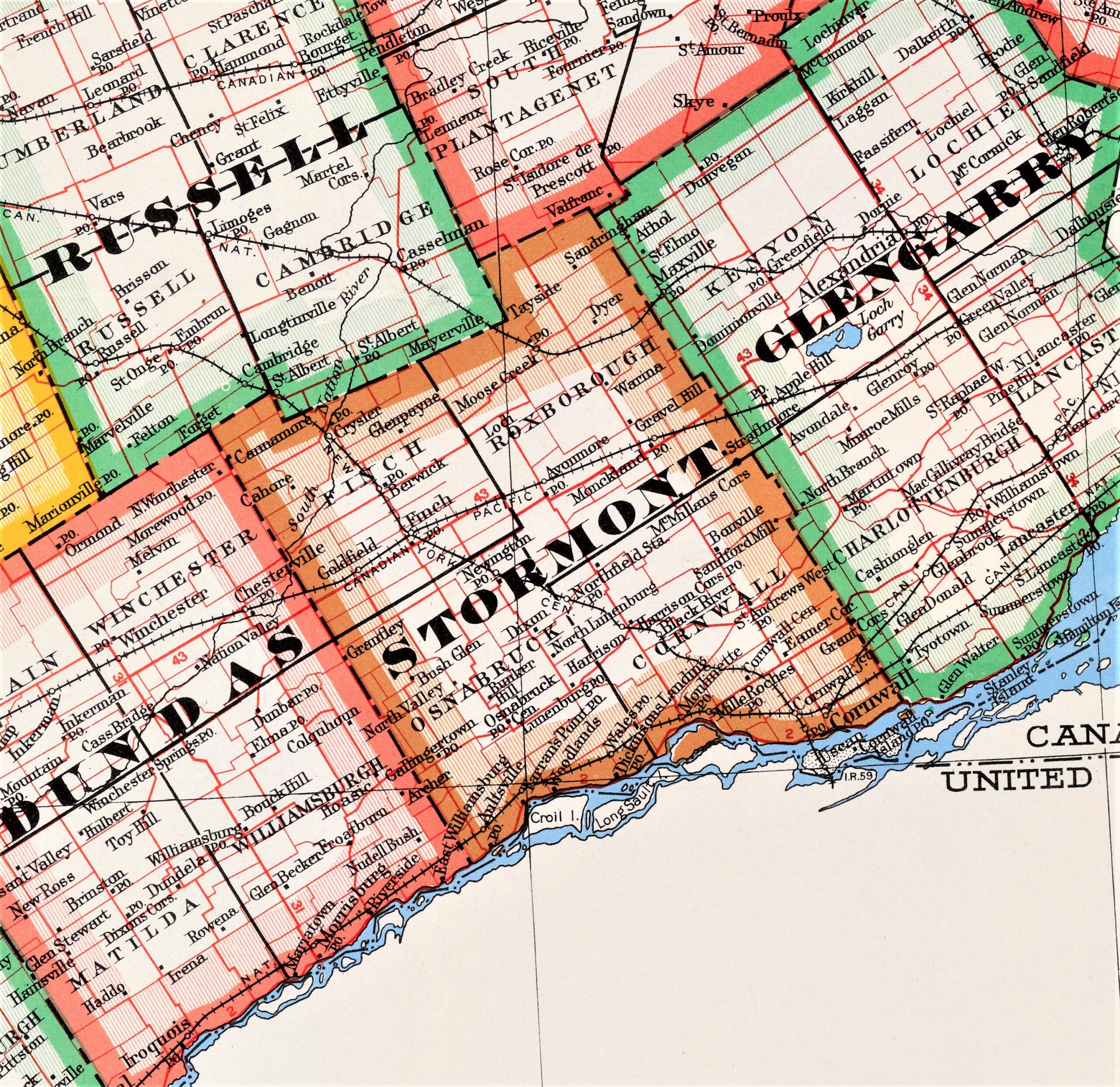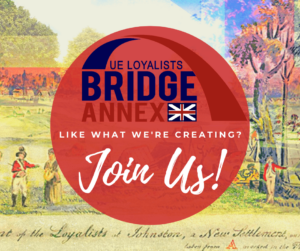Virtual Tours & Live Stops!
Welcome to the Bridge Annex produced Virtual Tours of Stormont, Dundas & Glengarry (SDG) Counties, Ontario, and Akwesasne Mohawk Territory.
Start your exploration of this region rich in history and natural beauty through videos and links that are sure to transport you to these special places. An interactive map is found on this page.
Enjoy your virtual travel!

Stormont, Dundas & Glengarry Counties (SD&G), and Akwesasne
Stormont, Dundas & Glengarry Counties: “Where Ontario Began”
“The Settlement Years: Much of SDG was settled by United Empire Loyalists. Members of the First Battalion of the King’s Royal Regiment of New York and their families were allotted land, “at their own request, according to race and religion.” As a result, Catholic Scottish Highlanders settled next to the present Québec border. Moving west, Scottish Presbyterians were next, followed by English Anglicans in and around Cornwall, and finally German (Palatine) Calvinists and Lutherans.
A Part of Upper Canada: From 1784-1788, eastern Ontario was designated as part of the District of Montréal. In 1788, Lord Dorchester created four new districts in the future Province of Upper Canada. The most easterly District was Lunenburg, named after the town in Hanover, Germany and connected to the British Royal family. Lunenburg, or the Eastern District, extended from the eastern limit of Lancaster Township, west to the Gananoque River and north to the Ottawa River.
The United Counties of SDG: In 1791, the Constitutional Act divided English speaking Upper Canada from French speaking Lower Canada. In 1798, the present counties of Grenville, Leeds and Carleton were separated, followed in 1816 by Prescott and Russell. This left the Eastern District with Stormont, Dundas and Glengarry. In 1849 the Eastern District was officially replaced by the United Counties of Stormont, Dundas and Glengarry, administered form Cornwall.
Our Modern Heritage: Today, each municipality has a unique culture. The region celebrates a number of unique events throughout the year. In South Glengarry you can find Canada’s oldest fair that takes place each summer in Williamstown, as well as the enchanting Ruins of St. Raphaels. Scottish heritage comes alive every year in North Glengarry at the annual Glengarry Highland Games. When travelling along the St. Lawrence Seaway, you can enjoy the salvaged history at South Dundas’s Upper Canada Village and South Stormont’s Lost Villages. In North Dundas (Ontario’s Dairy Capital) you can celebrate delicious cheeses and ice creams. On your way there, be sure to travel through North Stormont’s quaint villages and participate in Octoberfest.”
Source: The Counties SDG
Akwesasne: “Land where the partridge drums”
(Akwesasne content on this page – scroll down)
“The Mohawk Nation at Akwesasne (/ˌækwəˈsæsneɪ/ AK-wə-SAS-nay; French: Nation Mohawk à Akwesasne) (alternate spelling Ahkwesáhsne) is a Mohawk Nation (Kanienʼkehá꞉ka) territory that straddles the intersection of international (United States and Canada) borders and provincial (Ontario and Quebec) boundaries on both banks of the St. Lawrence River. Most of the land and population are in what is otherwise present-day Canada. A small portion is also in the United States. Although divided by an international border, the residents consider themselves to be one community. They maintain separate police forces due to jurisdictional issues and national laws.
The name Akwesasne in Mohawk means “Land Where the Partridge Drums”, referring to the rich wildlife in the area.” (Source: Wikipedia)
This map is interactive ~ Explore more in each county!
|
Keep Exploring at:

Akwesasne – “Land where the partridge drums”

Photo: Akwesasne Housing Authority
“The Mohawk are traditionally the keepers of the Eastern Door of the Iroquois Confederacy, also known as the Six Nations Confederacy or the Haudenosaunee Confederacy. Our original homeland is the north eastern region of New York State extending into southern Canada and Vermont. Prior to contact with Europeans the Mohawk settlements populated the Mohawk Valley of New York State. Through the centuries Mohawk influence extended far beyond their territory and was felt by the Dutch who settled on the Hudson River and in Manhattan. The Mohawks’ location as the Iroquois nation closest to Albany and Montreal, and the fur traders there, gave them considerable influence among the other Tribes. This location has also contributed directly to a long and beautifully complicated history.” Read More at: Culture and History: St. Regis Mohawk Tribe
Additional Reading:
The History of Akwesasne from Pre-Contact to Modern Times by Darren Bonaparte (Wampum Chronicles)
St. Regis Catholic Church Mission: “Established in the 1750s, the St. Regis Mission Catholic Church has been an iconic fixture at the confluence of the St. Lawrence and St. Regis rivers for centuries. The St. Regis Mission Catholic Church was established by French Catholic priests, but it wasn’t until 1795 that the beautiful stone building was built, making it one of the oldest buildings in the region. Oral history recounts that the church was built on traditional Mohawk ceremonial grounds. The location was also important due to its direct river access and was the site of many historic events, such as battles in the War of 1812.
Both the Catholic faith and Mohawk traditions are represented within the St. Regis Mission Catholic Church, which occasionally offers services and hymns in the Mohawk language. The church itself features unique Mohawk artwork and visuals, which meld with traditional Catholic design elements and religious fixtures. While the majority of people who worship at St. Regis Mission Catholic Church are Mohawk, visitors are welcome to come visit or worship at the historic church. See Images of Church at: St. Regis Mission Catholic Church
The History of the St. Regis Catholic Church and the Early Pastors by Darren Bonaparte (Wampum Chronicles)
Kanyen’kehà:ka (Mohawk) by Thomas S. Abler (Canadian Encyclopedia; Updated 2019)
Historic Storyboards in Akwesasne: Celebrating the people who’ve made Akwesasne history by Darren Bonaparte (Standard Freeholder; 2018)
Akwesasne: Sharing the Mohawk Spirit – Akwesasne Travel
VIDEO: Akwesasne History Project: Border Crossing (Akwesasne TV)
VIDEO: Akwesasne Aerial Tour (2016) (Mohawk Council of Akwesasne)
VIDEO: Akwesasne History Project: The St. Lawrence Seaway (Length 5:36; Akwesasne TV)
Akwesasne Cultural Center and Library
Experience Akwesasne Interactive Map (arcgis)
Akwesasne – many historical links (Wikipedia)
No Live Event in Akwesasne

SOCIÉTÉ DES MUSÉES DU QUÉBEC
Visit a unique site near Akwesasne in Saint-Anicet, Quebec: Tsiionhiakwatha/ Droulers Archaeological Centre
“Immerse yourself in the world of the St. Lawrence Iroquoians! The life-size reconstruction of an Iroquoian village is a major project that began in Saint-Anicet. It is a place that allows the population to build a fair representation of Iroquoian society and its way of life. The village amenities, artifacts, animation and workshops will allow you to live a unique and unforgettable experience.”
The Mohawk Nation – The Story Continues (virtualmuseum.ca; Tsiionhiakwatha/ Droulers Archaeological Centre)

Mohawk Valley Region: Path Through History

Other Canadian Loyalist Significant Sites
Fort Anne National Historic Site – Annapolis, Nova Scotia




